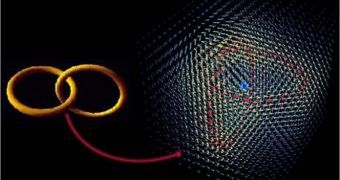Strings are hypothesized to one of the strangest structures in the entire Universe, but thus far experts have not had any luck in finding them. But now a team announces what could be the first indirect measurements of the stuff.
Physicists widely believe that cosmic strings are responsible for dictating the arrangement of matter in the existing Universe, just a short while after the Big Bang exploded everything into being.
Experts underline that these formations are very different from the subatomic strings of the renowned string theory. The cosmic variety can actually be detected, at least hypothetically.
The structures were first proposed to exist in the 1970s, and experts at the time said that they resembled fault lines in some regards.
After the Big Bang occurred, the theory goes, the Universe existed in a state in which it was made up entirely of very hot matter, which naturally began to cool at one point.
As this happened, some regions began to cool slower than the average, whereas others did so faster. Cosmic strings can therefore be thought of as cracks that appeared in the mass of the Universe.
Researchers compare this event to the cracks that appear on a surface of a frozen lake when the ice begins to give way. Cracks develop in all directions, where the ice is least strong.
The research team behind the new investigation says that it did not find direct evidence of the structures, but rather traces of them, safely tucked away inside very old quasars.
There are supermassive black holes at the core of extremely-large galaxies, which spew out massive jets of light and radiation into their surroundings, Space reports.
When the strings first developed, they where most likely very very thin, about the size of a proton. As time passed and the Universe expanded, they grow in size in two possible directions.
Experts believed that they either formed enormous rings, several of times larger in diameter than the Milky Way, or that they may have stretched in length throughout the known Universe.
“Their magnetic field sort of hitches a ride with the expansion of the Universe,” explains University of Buffalo expert Robert Poltis. He is also the lead author of the new research.
“It is still early to say that this work has discovered evidence for cosmic strings. It is promising, the science is sound, but one should be careful. There are assumptions made that need be checked," says Jon Urrestilla.
“But it is yet another piece to the puzzle, and the more predictions we can make from the same basic science into presumably independent effects, the closer we will be to detecting whether strings really were there,” adds the expert.
He is based at the University of the Basque Country in Biscay, Spain,
Poltis and his team published details of their investigation in a paper that appears in the October 11 issue of the esteemed scientific journal Physical Review Letters.

 14 DAY TRIAL //
14 DAY TRIAL //